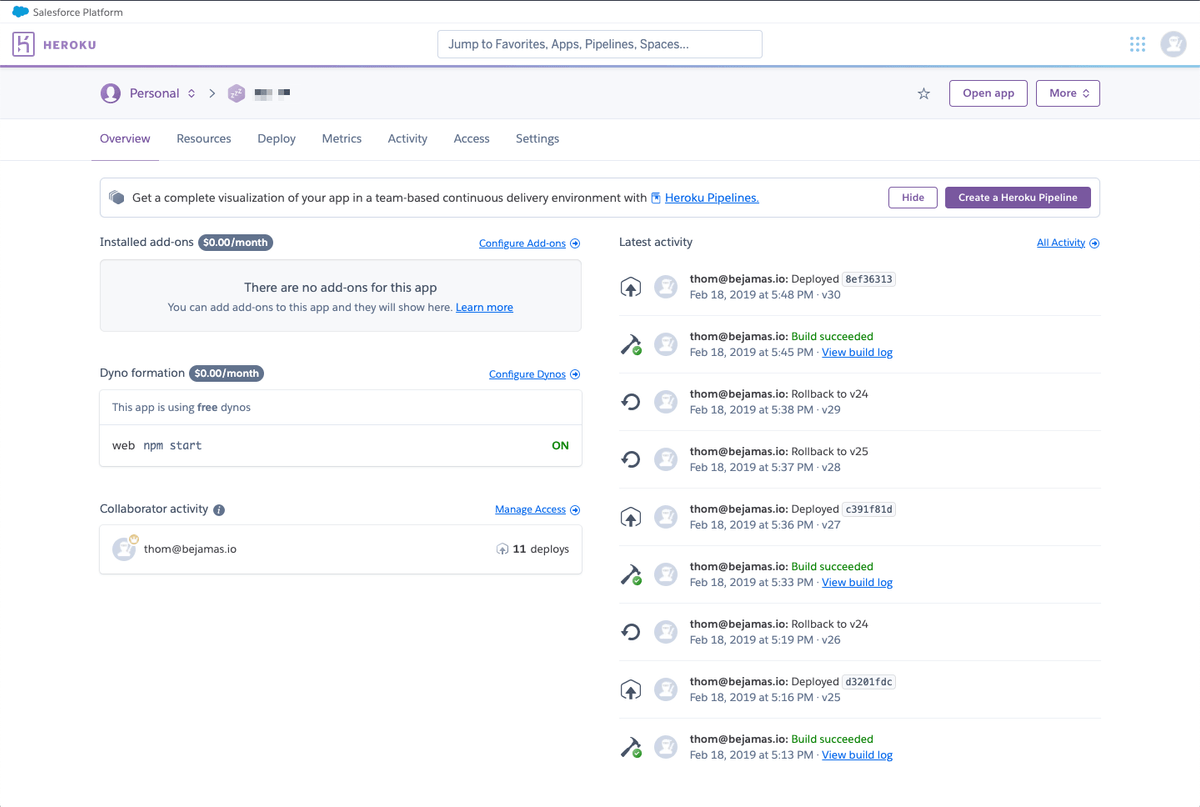Heroku
Heroku is one of the first Platform as a Service (PaaS) solutions that achieved great success. Founded in 2007 and acquired by Salesforce in 2010. Loved by a lot of developers for its flexibility and easy scaling. But is it good for a static-first Jamstack project?
![Thom Krupa]()
Thom Krupa
- Website: heroku.com
- Founded: 2007
- Infrastructure: Heroku Cloud
- Serverless: None
Last update: April 18, 2021
What is PaaS?
Platform as a Service is a model in which a company offers you the infrastructure you can manage. Run, develop using the cloud without the complexity of maintaining the infrastructure.
Everything is a dyno
Dynos are the main Heroku products. Each dyno is a virtualized Linux container. That makes scaling easier since you can increase or decrease the number of used dynos, manage its size and type.

Is Heroku good for Jamstack?
Heroku is not made for static-first Jamstack projects. It doesn’t have its own CDN. You can integrate it with 3rd-party networks like Amazon CloudFront, but that requires more steps and hassle. It’s too complicated to host a static website, and there are many better and cheaper options.
Conclusion
Heroku is a great solution if you run a full server backend. It integrates easily with Node, Ruby, Java, PHP, Python, Go, Scala, or Clojure. A large ecosystem of integrations and add-ons makes it trivial to connect databases and 3rd-party services.
- Easy scalable Linux containers (dynos)
- One-click rollbacks
- Large ecosystem with integrations (add-ons)
- Serverful apps.
- Databases.
